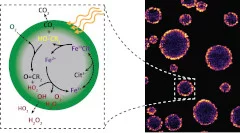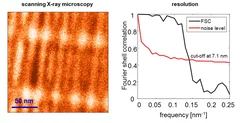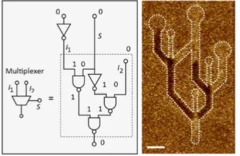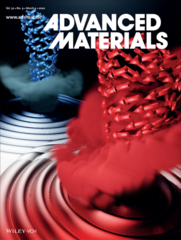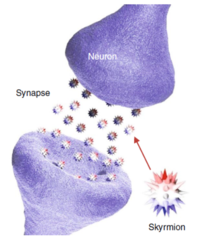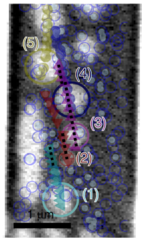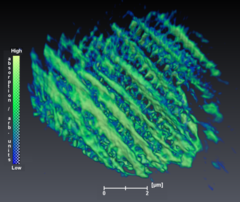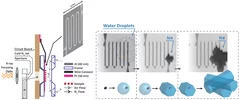News & Scientific Highlights
Looking inside airborne particles for the chemistry responsible for their adverse health effects.
Chemical changes inside of breathable airborne particles can cause reactive oxygen species (ROS) and carbon centered radicals (CCRs) to form, which are harmful to our bodies and induce oxidative stress in lungs. Using X-ray spectromicroscopy at the PolLux beamline and mimicking the environmental and sunlit conditions aerosol particles experience in the atmosphere near the Earth Surface, it was recently found that highly viscous organic particles with low water content can attain high concentrations of ROS and CCRs that persist over long times. Natural particles like these will occur in ambient humidity below 60% and effectively trap ROS and CCRs inside that react when exposed to light.
World Record: 7 nm Resolution in Scanning Soft X-ray Microscopy
During the past decade, scientists have put high effort to achieve sub-10 nm resolution in X-ray microscopy. Recent developments in high-resolution lithography-based diffractive optics, combined with the extreme stability and precision of the PolLux and HERMES scanning X-ray microscopes, resulted now in a so far unreached resolution of seven nanometers in scanning soft X-ray microscopy. Utilizing this highly precise microscopy technique with the X-ray magnetic circular dichroism effect, dimensionality effects in an ensemble of interacting magnetic nanoparticles can be revealed.
Logic operations with domain walls
A collaboration of scientists from the ETH Zürich and the Paul Scherrer Institute successfully demonstrated the all-electric operation of a magnetic domain-wall based NAND logic gate, paving the way towards the development of logic applications beyond the conventional metal-oxide semiconductor technology. The work has been published in the journal Nature.
Optics for spins
In this work, published on the front cover page of Advanced Materials, an international collaboration of Italian, American, and Swiss scientists demonstrated a novel concept for the generation and manipulation of spin waves, paving the way towards the development of magnonic nano-processors.
Can skyrmions read?
Can a skyrmion-based device be used to read a handwritten text? In this work, an international scientist collaboration led by the Korea Institute of Technology and the IBM Watson research center could provide a first answer to this question by fabricating a proof-of-principle single-neuron artificial neural network, using X-ray magnetic microscopy at the Swiss Light Source to investigate its performances.
Many skyrmions, one angle
Employing a tailored multilayered magnetic film, optimized for the zero-field stabilization of magnetic skyrmions, researchers have investigated the influence of the skyrmion diameter on its current-induced sideways motion, uncovering mechanisms that allow for this topological property to be controlled.
Soft X-ray Laminography: 3D imaging with powerful contrast mechanisms
3D imaging using synchrotron radiation is a widely used tool that allows access to the inner structure of complex objects. An international and interdisciplinary consortium of scientists from the Swiss Light Source (PolLux and cSAXs), the Friedrich-Alexander-Universität Erlangen-Nürnberg, and the University of Cambridge developed the new 3D imaging technique of Soft X-ray Laminography (SoXL). SoXL allows for the investigation of thin and extended samples while taking advantage of the characteristic absorption contrast mechanisms in the soft X-ray range, providing 3D information with nm spatial resolution.
Nano-engineered contact for the zero-field nucleation of magnetic skyrmions
Researchers in a joint collaboration between the PolLux endstation of the Swiss Light Source and the University of Leeds have achieved the reliable and reproducible electrical nucleation of magnetic skyrmions from a nano-engineered point contact structure, investigating the physical mechanisms driving the nucleation process.
Chemically mapping ice forming particles
Scientists have just nucleated ice in an X-ray microscope for the first time and they created chemical maps of those responsible.
